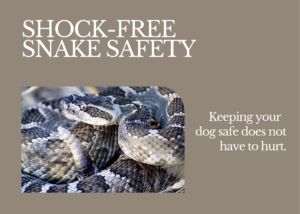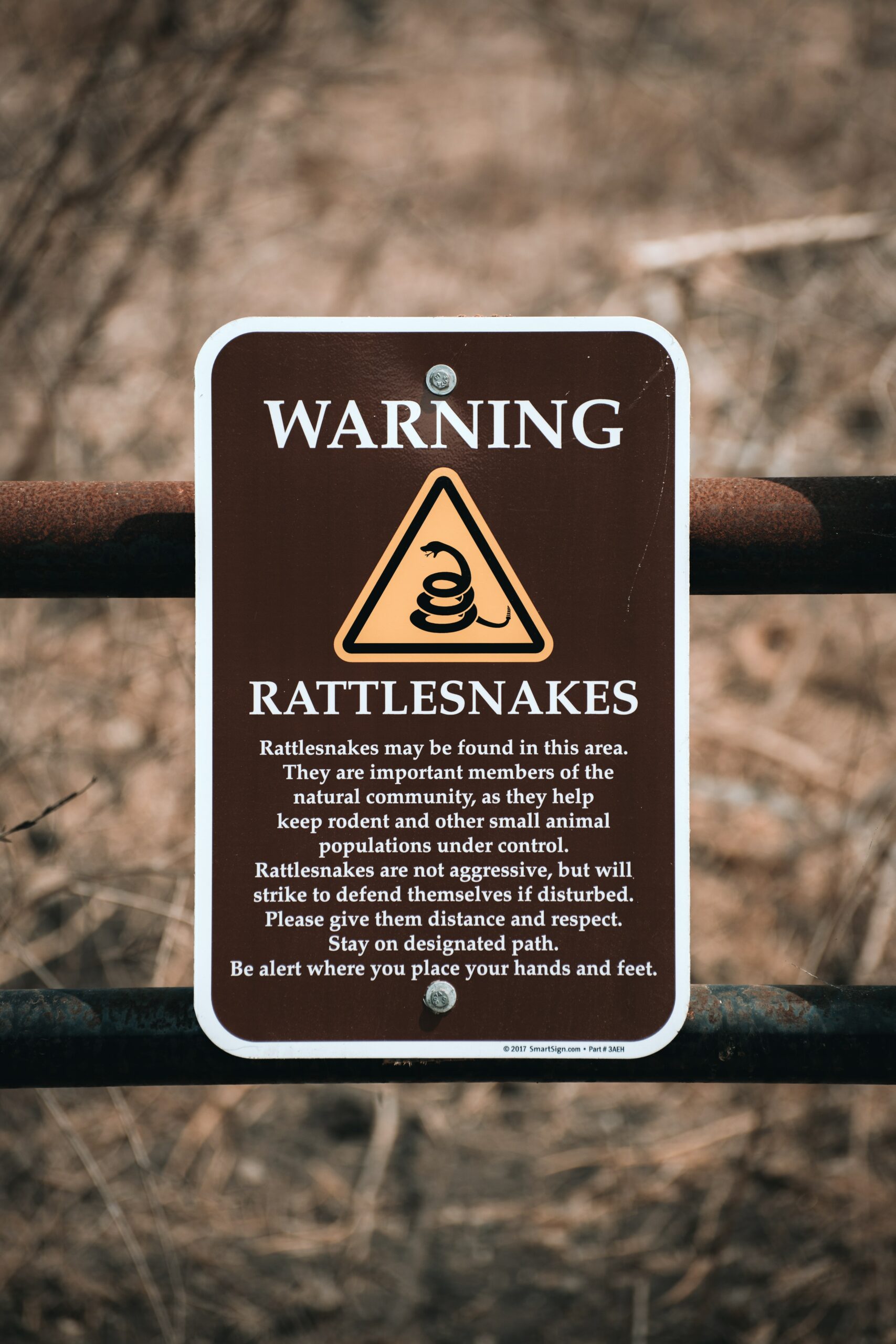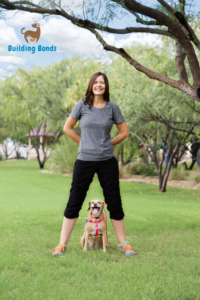Pets and Their People Blog
Shock-Free Snake Safety
Warm weather might bring on thoughts of outdoor adventures with our dogs. However, something that may not be enticing for outdoor adventures is that venomous snakes share our outdoor spaces!

If you live in an area with venomous snakes, a snake safety protocol for your dog is critical. What should be in a snake safety protocol for your dog?
PET: Prepare. Educate. Train.
Prepare for Peak Snake Season
- Keep your dog on a leash on hiking trails and other habitat areas for snakes or avoid these areas altogether during peak snake season.
- Check your yard before letting your dog outside.
- Know where your nearest emergency vet hospital is and whether they have antivenom for the snakes indigenous to your area.
- If you live in a high-risk snake area, get pet insurance to help with the cost of care should your dog be bitten.
Educate Yourself
- Your dog may not indicate they have been bitten because the severe pain does not begin until the swelling starts. If your dog is acting strangely, look for two puncture wounds made by snake fangs. Bites often happen on the face, front paws, or legs.
- Learn how to care for a bite before you get to the hospital. If you see the bite wound, rinse the wound with water to remove some venom. Keep the wound below the heart and keep your dog calm to discourage the spread of venom.
Train Your Dog to Move Away from Venomous Snakes
Traditionally, snake aversion trainers use a shock collar to shock a dog in the presence of a venomous snake. Yes, it hurts the dog, that is the intent. The idea is that the dog will make the association that the snake caused the pain and stay away from snakes in the future. The outcome can vary by dog. Some dogs make this association and some do not. Can you imagine getting shocked and not understanding why? Some dogs go on to be bitten by snakes in the future, despite this aversive training. Others make entirely different long-term negative associations and associate the painful shock with:
- the owner or trainer who is present at the time,
- the location of the aversion training,
- other dogs who may be present for the training,
- any collar placed on the dog, or
- any sound that may be remotely similar to the rattle of a snake.
Many people sign their dogs up for this type of training and have no idea what is involved. In Pima County, Arizona, one snake handler shared that their company provided snakes for 2,800 dogs in 2022 for this type of snake aversion training. Most think that this is the only way to keep their dogs “safe.” It is not.
The Humane Way to Train Your Dog to Move Away from Snakes

There are trainers around the globe providing alternative training protocols to shock collars for snake aversion using positive reinforcement. I am one of them. I live in Southern Arizona where Western Diamondback, Mojave, and Black Tailed Rattlesnakes are prevalent. In 2016, I learned a protocol from the brilliant trainer Pamela Johnson and have been offering shock-free snake safety ever since. Over the years, I have modified how I teach this skill to students to make the training as simple as possible.
Here are the general steps to teach your dog to safely move away from a venomous snake and alert you that a snake is nearby:
- Train a reliable recall cue.
- Train an alert behavior. My go-to is a nose target to the handler’s leg. Other alert behaviors might be a bark, both paws up on the handler or any other behavior the dog does not offer in other contexts.
- Using a fake snake, let the dog see the snake, cue the recall and then the alert behavior. Mark (with a clicker or verbal marker, such as, “Yes!”) and heavily reward your dog. Repeat 3-5 times.
- Using a fake snake, let the dog see the snake. Pause to see if they return to you after seeing the snake. When they do, cue the alert if they do not offer it on their own. Mark and heavily reward your dog.
- Repeat steps 3 and 4 with a biological sample of the odor of the snakes indigenous to your area. I use rags that have been in a tank with Western Diamondback, Mojave and Black Tailed Rattlesnakes provided by a handler licensed by Arizona Game and Fish.
- Repeat steps 3 and 4 using the sound of a rattlesnake. I use a Bluetooth speaker.
- If possible, hire a snake handler to test your dog’s snake safety skills using live venomous snakes.
World-renowned animal trainer Ken Ramirez says, “Advanced training is just the basics done really, really well.” This couldn’t be more true for positive reinforcement snake training.
There are certainly nuances to the training. Yet, the steps above are very simple and if followed and practiced consistently, your dog will learn to move away from snakes and alert you to them without being subjected to any physical pain in the name of training.
Pamela Johnson’s protocol is available online at Tawzer. Eilleen Koval created an online self-paced course. Eileen’s course is easy to follow and provides education on snakes and acquiring biological samples. Both of these resources are offered at an affordable price. Ken Ramirez from Karen Pryor Clicker Training has an online interactive course available through Karen Pryor Academy. You can read more from Ken Ramirez on his protocol here and here.
About the Author
Kim Silver PCT-A, KPA CTP, CBATI-KSA, LFDM is the owner and head trainer at Building Bonds in Tucson, Arizona. Kim specializes in leash reactivity, aggression, fearful dogs and loves teaching puppies and their people. Kim is happy to answer questions about snake safety. You can reach her by visiting https://buildingbondstraining.com/


